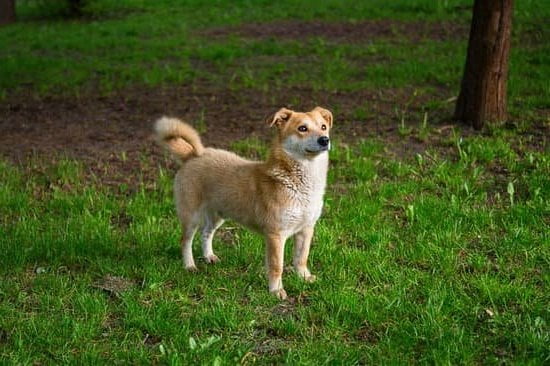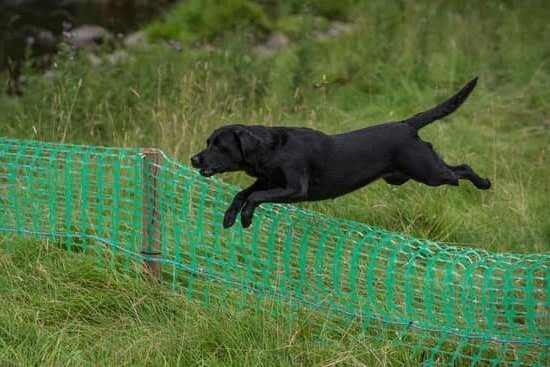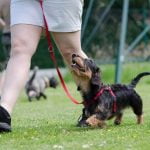Potty training dogs in apartments is a crucial aspect of pet ownership for those living in urban settings. Whether you have a new puppy or an older dog adjusting to apartment life, teaching them where to do their business is essential for a harmonious living environment. In this article, we will delve into the importance of potty training for dogs in apartments and provide you with valuable tips and strategies to make the process smooth and successful.
Living in an apartment presents unique challenges when it comes to potty training your furry friend. Limited outdoor space and shared common areas require a different approach compared to homes with yards. By understanding the significance of proper potty training, you can create a comfortable and hygienic living environment for both you and your dog. Choosing the right method tailored to your dog’s needs is the first step towards success.
Setting up a designated potty area within your apartment is crucial for establishing consistency in your dog’s routine. From selecting the appropriate materials to creating an inviting space, every detail matters when it comes to encouraging good bathroom habits. With a well-thought-out plan and dedication to regular training, you can help your dog learn where and when they should relieve themselves, leading to a happier cohabitation experience.
Choosing the Right Potty Training Method for Your Dog’s Needs
When it comes to potty training your dog in an apartment, it is crucial to choose the right method that suits your dog’s individual needs. One popular method is crate training, where dogs are confined to a crate when not supervised, encouraging them to hold their bladder until they are taken outside. This method works well for many dogs as it utilizes their natural instinct not to soil their sleeping area.
Another effective method is paper training, where dogs are trained to eliminate on a specific type of paper or pad placed indoors. This can be useful for apartment dwellers who may not have easy access to outdoor areas.
It is essential to consider your dog’s breed, age, and temperament when choosing a potty training method. For example, small breeds may have difficulty holding their bladder for long periods and may benefit from more frequent potty breaks.
Older dogs or rescue dogs may already have established habits that need to be broken before new potty training methods can be successful. By understanding your dog’s specific needs and characteristics, you can select the most suitable training approach for them.
Consistency is key when potty training dogs in apartments, regardless of the method chosen. Dogs thrive on routine, so establishing a consistent schedule for feeding, bathroom breaks, and exercise will help set them up for success. Be patient with your furry friend during the training process and remember to praise them for good behavior. With time and dedication, you can effectively potty train your dog in an apartment setting by selecting the right method tailored to their needs.
| Method | Suitability |
|---|---|
| Crate Training | Works well for many dogs by utilizing their instinct not to soil sleeping area. |
| Paper Training | Useful for apartment dwellers without easy outdoor access; trains dogs to eliminate on paper or pads indoors. |
Setting Up the Perfect Potty Area in Your Apartment
Living in an apartment with a dog can pose some challenges when it comes to potty training. However, setting up the perfect potty area in your apartment can make this process much smoother and more successful. The key to successfully potty training dogs in apartments is to create a designated spot where your furry friend knows they are allowed to do their business.
When selecting a location for your dog’s potty area, choose a spot that is easily accessible and relatively quiet. This could be a corner of your balcony, a designated area on your patio, or even inside with the use of pee pads or artificial grass. Make sure this spot is away from feeding areas and living spaces to help prevent accidents.
Once you have chosen the location for your dog’s potty area, consider the type of surface that will work best for them. Some dogs prefer real grass, while others may be comfortable using pee pads or synthetic grass mats. Experiment with different options to see what works best for your furry companion.
Additionally, ensure that there are proper drainage systems in place if you are using real grass or outdoor options. By providing a suitable and inviting potty area, you are setting your dog up for success when learning how to potty train dogs in apartments.
Establishing a Potty Training Routine for Consistency and Success
Establishing a potty training routine for your dog is essential for consistency and success in training them to use the designated potty area in your apartment. Consistency is key when it comes to potty training, as dogs thrive on routine and repetition. By establishing a set schedule for potty breaks, you can help your dog understand when and where they are supposed to go potty.
One important aspect of setting up a potty training routine is to take your dog outside or to their designated potty area first thing in the morning, after meals, before bedtime, and at regular intervals throughout the day. This will help prevent accidents inside your apartment and reinforce the behavior of going potty in the appropriate spot. Be sure to praise and reward your dog every time they successfully use the designated potty area, reinforcing their good behavior.
It’s also crucial to pay attention to your dog’s cues and body language to anticipate when they need to go potty. Common signs that your dog may need to relieve themselves include sniffing around, circling an area, whining, or suddenly becoming restless.
By being observant and proactive in taking your dog out during these times, you can further reinforce their training and prevent accidents from happening indoors. Consistent positive reinforcement, patience, and a regular routine will all contribute to successfully potty training your dog in an apartment setting.
Utilizing Positive Reinforcement Techniques to Encourage Good Behavior
Positive reinforcement is a crucial aspect of successfully potty training dogs in apartments. By using positive reinforcement techniques, you can effectively encourage good behavior and make the training process more enjoyable for both you and your furry friend. Here are some strategies to help you reinforce positive behavior during the potty training process:
- Rewarding with Treats: One of the most common methods of positive reinforcement is giving your dog a treat immediately after they exhibit the desired behavior, such as going potty in the designated area. Make sure to use high-value treats that your dog loves to increase their motivation.
- Praise and Affection: Along with treats, verbal praise and physical affection are also effective forms of positive reinforcement. Showering your dog with praises like “Good job.” or giving them belly rubs can create a positive association with going potty in the right spot.
- Clicker Training: Clicker training involves using a clicker to signal to your dog that they have performed the desired behavior correctly, followed by a reward. This method helps to clearly communicate to your dog what behavior is being reinforced.
Consistency is key when using positive reinforcement techniques during potty training. Always reward your dog immediately after they go potty in the designated area, so they can quickly make the connection between their action and the reward. Remember to keep training sessions short and frequent to maintain your dog’s focus and motivation.
In addition to rewards, it’s important to remain patient and avoid punishment during the potty training process. Punishing your dog for accidents or mistakes can lead to fear and anxiety, making it harder for them to learn where they should go potty. Instead, focus on reinforcing good behavior consistently and celebrating small victories along the way. With time, patience, and positive reinforcement, your dog will soon become proficient at knowing how to potty train dogs in apartments
Dealing With Accidents
Accidents are a natural part of the potty training process, especially when it comes to training dogs in apartments. It is important to remain patient and understanding when accidents do occur, as it is all part of the learning curve for your furry friend. However, knowing how to properly clean up accidents and prevent future mishaps can make the potty training journey smoother for both you and your dog.
When accidents happen, it is crucial to clean up the mess promptly and thoroughly. Here are some tips on how to effectively clean up after your dog has an accident in your apartment:
- Start by blotting up as much of the urine or feces as possible with paper towels or old cloth towels.
- Use a pet-friendly cleaner specifically designed to target pet odors and stains.
- After cleaning the area, sprinkle baking soda over the spot to help neutralize any remaining odors.
- Consider using a black light to detect urine stains that may not be visible to the naked eye.
In addition to cleaning up accidents properly, taking steps to prevent future mishaps is essential in maintaining a successful potty training routine. Here are some preventive measures you can implement in your apartment:
- Establish a consistent feeding schedule for your dog, which will help regulate their bathroom habits.
- Take your dog outside regularly for potty breaks, especially after meals, playtime, and naps.
- Supervise your dog closely when they are indoors and provide them with access to their designated potty area at all times.
By being proactive in cleaning up accidents promptly and implementing preventive measures in your apartment, you can help set your dog up for success in their potty training journey. Remember that consistency, patience, and positive reinforcement are key components in successfully potty training dogs in apartments.
Overcoming Challenges
Limited Outdoor Access
One of the common challenges when potty training dogs in apartments is limited outdoor access. Unlike dogs in houses with yards, apartment-dwelling dogs may have to wait for their owners to take them outside for bathroom breaks.
To overcome this challenge, owners can establish a set schedule for potty breaks and ensure they are consistent with taking their dog out at the same times each day. This routine helps the dog understand when they can expect to go outside and reduces accidents indoors.
Noisy or Busy Environments
Another issue faced by apartment dwellers is living in a noisy or busy environment, which can be distracting for dogs trying to focus on their potty training. In such cases, it’s important to create a calm and quiet space for the dog’s designated potty area.
This could mean placing a screen or barrier around the area to provide some privacy and reduce distractions. Additionally, using calming cues or commands during potty breaks can help the dog stay focused and relieve themselves without being overly stimulated by the surrounding environment.
Small Living Spaces
Living in an apartment often means dealing with small living spaces, making it challenging to find a suitable spot for a potty area. To address this issue, owners can get creative with indoor potty solutions such as artificial grass patches, pee pads, or even dog litter boxes.
These products are specifically designed for indoor use and make it easier for apartment-dwelling dogs to have a designated place to go potty without causing mess or damage to the apartment. By adapting to the limitations of small living spaces, owners can successfully overcome this common challenge in potty training their dogs in apartments.
Celebrating Success
After successfully potty training your dog in your apartment, it’s important to celebrate the achievement and gradually transition them to independence. This stage marks a significant milestone in your dog’s development and signals their ability to understand and follow a routine for their potty needs. With consistent training and positive reinforcement, you can now start allowing your furry friend more freedom in the apartment while still maintaining good potty habits.
Increasing Freedom Gradually
As your dog demonstrates proficiency in using their designated potty area, you can begin giving them more freedom within the apartment. Start by expanding the supervised areas they can access, ensuring that they still have easy access to their potty spot.
Slowly increase their unsupervised time while keeping a close eye on any signs that they may need to go outside. This gradual progression allows your dog to build confidence in their ability to hold their bladder and reinforces good behavior.
Monitoring Progress and Providing Encouragement
During this transition phase, it’s important to continue monitoring your dog’s progress closely. Keep track of how often they are going potty, any accidents that may occur, and whether they are signaling when they need to go out. Provide plenty of verbal praise and rewards when they use the designated area appropriately, reinforcing the positive behavior. Consistency is key during this stage as you work towards complete independence for your potty trained dog.
Maintaining Good Habits
Even as you grant your dog more independence in the apartment, it’s essential to maintain the established routine and potty training methods. Continue taking them outside regularly, especially after meals or playtime, to reinforce good habits. If accidents do happen during this transition period, remain patient and avoid punishment, as this could set back their progress. With continued positive reinforcement and consistency, your dog will soon be fully independent in their potty training habits within the apartment setting.
Additional Tips and Tricks for Maintaining Potty Training Success in Your Apartment-Dwelling Dog
Potty training dogs in apartments can be a challenging but essential task for pet owners. Once you have successfully established a potty training routine and set up the perfect potty area in your apartment, it is crucial to maintain that success and continue reinforcing good behavior in your furry companion. Here are some additional tips and tricks to help you sustain your dog’s potty training success in your apartment.
Consistency is key when it comes to maintaining proper potty training habits in your dog. Make sure to stick to a regular schedule for potty breaks and praise your dog each time they go potty in the designated area. By consistently reinforcing positive behavior, you will help solidify good habits and prevent any setbacks in the potty training process.
Another useful tip is to monitor your dog’s behavior closely, especially during times when accidents are more likely to occur, such as after meals or first thing in the morning. By paying attention to their cues and preemptively taking them out for potty breaks, you can reduce the likelihood of accidents happening inside your apartment.
Additionally, consider using verbal cues or commands to signal to your dog when it’s time for them to go potty, which can further reinforce their understanding of where they should do their business.
Lastly, don’t forget to celebrate small victories along the way as your dog becomes more adept at using their designated potty area. Positive reinforcement through treats, praise, or playtime can go a long way in encouraging your dog to continue exhibiting good bathroom habits. Remember that patience and perseverance are key components of successful potty training for dogs in apartments, so stay consistent and positive throughout the process.
Frequently Asked Questions
How Do You Toilet Train a Dog in an Apartment?
Toilet training a dog in an apartment requires patience, consistency, and positive reinforcement. Establish a routine for potty breaks and take your dog to the designated bathroom spot frequently, especially after meals or naps. Use a cue word to encourage elimination, reward good behavior with treats or praise, and clean up accidents promptly with an enzymatic cleaner.
Where Should My Dog Pee in an Apartment?
Ideally, your dog should pee in a designated bathroom spot within your apartment. This could be on a pee pad, artificial grass patch, litter box, or even on real grass if you have access to an outdoor area or balcony. Consistency is key in teaching your furry friend where it’s appropriate to relieve themselves.
Where Do Dogs Go to the Toilet in an Apartment?
Dogs can go to the toilet in various spots within an apartment, depending on the owner’s preferences and living situation. Some choose to use indoor pee pads or grass patches specifically designed for dogs.
Others may opt for taking their dogs outside for regular potty breaks or training them to hold it until they can reach the outdoors. Ultimately, the most important thing is to establish a consistent routine that works for both you and your canine companion.

Welcome to the blog! I am a professional dog trainer and have been working with dogs for many years. In this blog, I will be discussing various topics related to dog training, including tips, tricks, and advice. I hope you find this information helpful and informative. Thanks for reading!





